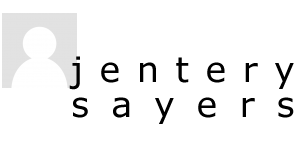INTRODUCTION

As a standard of documentation, metadata is currently somewhat of an afterthought in the undergraduate geographic information systems (GIS) classroom. GIS curriculum tends towards the . . . [read more]

From my perspective, operating through a “Standards in the Making” (SITM) approach highlights the difficulties and opportunities involved in making research move both within and . . . [read more]
This chapter is an investigation of metadata through what we call a “Standards in the Making” (SITM) approach. But what is “Standards in the Making”? What does it entail, and . . . [read more]

Let me take for granted one claim: That the new work of composing is the work of composing new media as a form of scholarship, where new media are more than objects of inquiry. They are the very means through which . . . [read more]

The establishment and adherence to standards within a discourse community have always been crucial concerns for rhetoricians. Indeed, many of the approaches that scaffold modern . . . [read more]
ANALYSIS

As it is currently understood in the GIScience literature, metadata is not equivalent to folksonomic tagging systems. Traditionally, metadata is an “agreed-upon” standard of . . . [read more]

My reading of ”Standards in the Making” (SITM) suggests that metadata and tagging practices should be thought of as a particularly interesting form of knowledge-production. This line of inquiry is . . . [read more]
The entries in this layer consist of our individual analyses of the folksonomic tagging system used in the context of The Flickr Commons Project. At this stage of the project, our goal was to . . . [read more]

In their October 2008 report on the pilot project conducted by Flickr and the Library of Congress (LoC), Michelle Springer et al. provide findings on how and to what effects Flickr members have contributed . . . [read more]

The application of metadata to an informatic object is an attempt to situate the object within a larger system—to position it in terms of an accepted or emerging network. Metadata orients the reader’s attention . . . [read more]
SYNTHESIS

How does one practice “Standards in the Making” (SITM)? As Curtis notes, “SITM as a critical practice must inquire into the “work” that description does across information archives.” Certainly, as . . . [read more]

To me, the most productive aspect of the “Standards in the Making” approach which we have, collectively, been attempting to elaborate, is its particular alignment of critical and creative practice. In this . . . [read more]
In this layer, the work previously generated in the “Analysis” stage is enlisted in an attempt to define the work of SITM in practice. Here, each author synthesizes the insights of the group in order to pursue of a particular . . . [read more]

So how to practice standards in the making (SITM)? And to what effects on a field such as the digital humanities? From my reading of Curtis’s, Jamie’s, and Matt’s analyses of the Library of Congress (LoC)’s Flickr . . . [read more]

It is important to note that while new forms of metadata—such as the folksonomies and geospatial data that undergird our analyses in this chapter—present new challenges and . . . [read more]
STANDARDIZATION
In many foundational theoretical debates, the term, “cultural formation” can be located at the center of disagreements regarding the precise relation of the cultural domain to economic, political, and . . . [read more]
In the broadest sense, inquiring into the “rhetorical situation” of metadata and new media composition requires approaching the problems and affordances of social tagging systems . . . [read more]
One aspect of recognizing the affordances of text requires our availability to move through text or move text serendipitously. Serendipity is the practice of stumbling across standards. In our discussions of . . . [read more]
Given that this multi-authored investigation of the contexts and practices of social tagging began with a group analysis of the Flickr Commons digital photo collection, it is no wonder that . . . [read more]
If this investigation has had a centralizing impulse at all, it has been to construct an analysis of the multiple “constraints and affordances” involved in making media with metadata in mind. Therefore, each of our different lines of . . . [read more]
Our method to this point has been to approach questions of tagging, digital archiving, folksonomies, and new media from a variety of disciplinary angles to see what “emerges” both in terms of our group’s standards . . . [read more]
In a “Standards in the Making” (SITM) approach, standards emerge and are contingent. The keyword “standards” that compose this layer of our project are certainly no different. Here we have drawn from our . . . [read more]
Collaboration from a SITM perspective involves the collective efforts of humans and machines. Each of our writings describe this collaboration, whether between humans, machines, or humans and machines. In . . . [read more]
The platform is the vehicle through which a standards in the making (SITM) approach materializes. Here, we speak of the various code-work, software and hardware configurations . . . [read more]
We have described standards in the making (SITM) as a process, as a method for critical inquiry and production. Across these two thrusts of SITM, the notion of contingency highlights . . . [read more]
Standardization is a theme found throughout our writings of standards in the making (SITM), as part of the new work of composing. Standards are provided through some sense of a protocol, whether written in the actual . . . [read more]
It is tempting to treat metadata merely as information. As Jentery shows, metadata does enable some distance from artifacts, and that distance is often empowering. For one, it allows people to wrangle . . . [read more]
In keeping with the most basic premises of our SITM approach, we have set out in this webtext to reveal contingency and process in the construction of metadata standards while. . . . [read more]